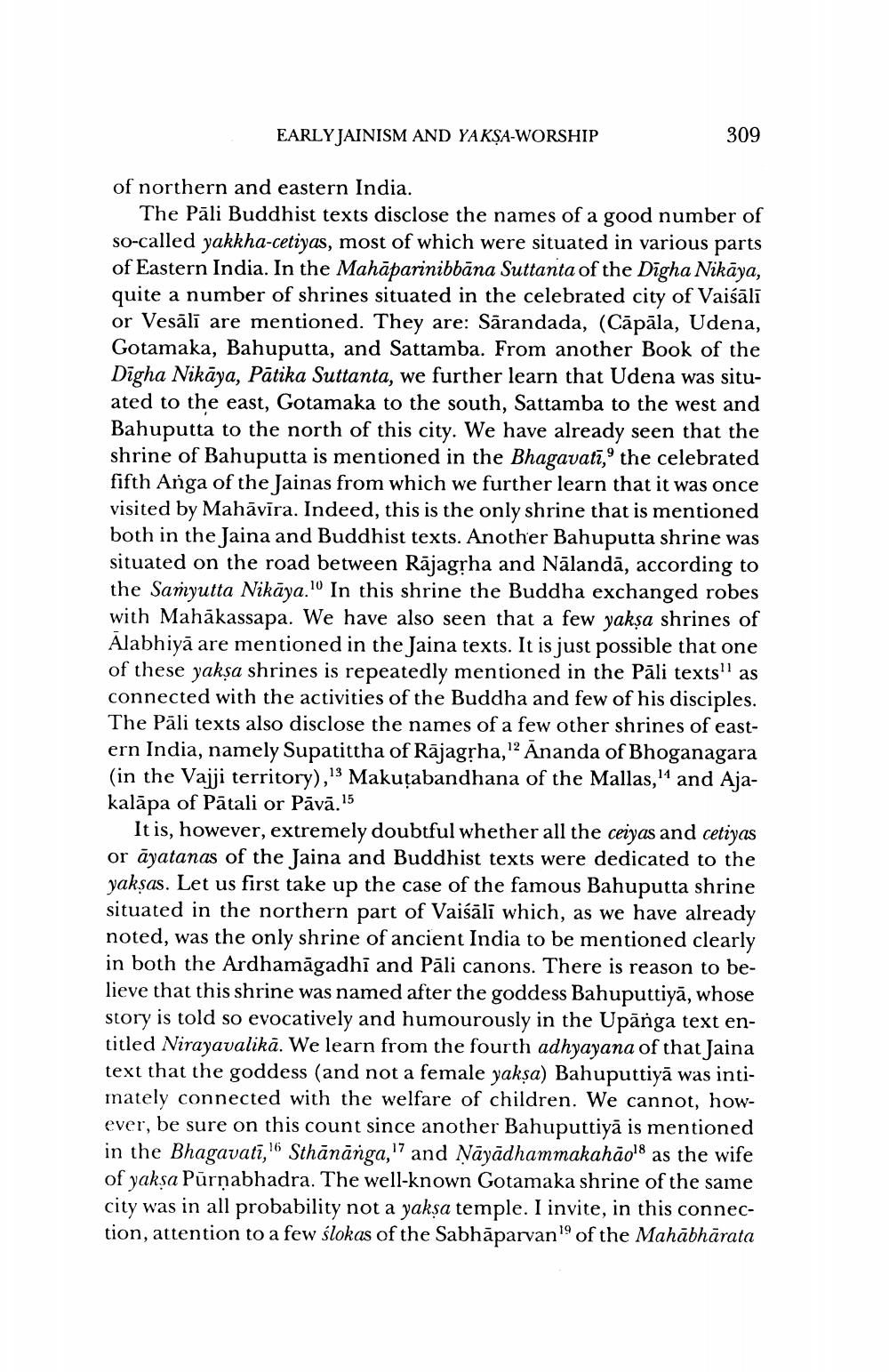________________
EARLY JAINISM AND YAKṢA-WORSHIP
309
of northern and eastern India.
The Pali Buddhist texts disclose the names of a good number of so-called yakkha-cetiyas, most of which were situated in various parts of Eastern India. In the Mahaparinibbāna Suttanta of the Digha Nikaya, quite a number of shrines situated in the celebrated city of Vaiśālī or Vesāli are mentioned. They are: Sarandada, (Capāla, Udena, Gotamaka, Bahuputta, and Sattamba. From another Book of the Digha Nikaya, Pātika Suttanta, we further learn that Udena was situated to the east, Gotamaka to the south, Sattamba to the west and Bahuputta to the north of this city. We have already seen that the shrine of Bahuputta is mentioned in the Bhagavati," the celebrated fifth Anga of the Jainas from which we further learn that it was once visited by Mahāvīra. Indeed, this is the only shrine that is mentioned both in the Jaina and Buddhist texts. Another Bahuputta shrine was situated on the road between Rajagṛha and Nālandā, according to the Samyutta Nikaya.10 In this shrine the Buddha exchanged robes with Mahākassapa. We have also seen that a few yakṣa shrines of Alabhiya are mentioned in the Jaina texts. It is just possible that one of these yakṣa shrines is repeatedly mentioned in the Pāli texts11 as connected with the activities of the Buddha and few of his disciples. The Pali texts also disclose the names of a few other shrines of east
ern India, namely Supatittha of Rajagṛha,12 Ananda of Bhoganagara (in the Vajji territory),13 Makuṭabandhana of the Mallas,11 and Ajakalāpa of Pātali or Pāvā.15
It is, however, extremely doubtful whether all the ceiyas and cetiyas or ayatanas of the Jaina and Buddhist texts were dedicated to the yakṣas. Let us first take up the case of the famous Bahuputta shrine situated in the northern part of Vaiśāli which, as we have already noted, was the only shrine of ancient India to be mentioned clearly in both the Ardhamāgadhi and Pāli canons. There is reason to believe that this shrine was named after the goddess Bahuputtiyā, whose story is told so evocatively and humourously in the Upanga text entitled Nirayavalika. We learn from the fourth adhyayana of that Jaina text that the goddess (and not a female yakṣa) Bahuputtiyā was intimately connected with the welfare of children. We cannot, however, be sure on this count since another Bahuputtiya is mentioned in the Bhagavati, Sthānānga," and Ṇāyādhammakahão18 as the wife of yakṣa Pūrṇabhadra. The well-known Gotamaka shrine of the same city was in all probability not a yakṣa temple. I invite, in this connection, attention to a few slokas of the Sabhāparvan of the Mahabharata
16




